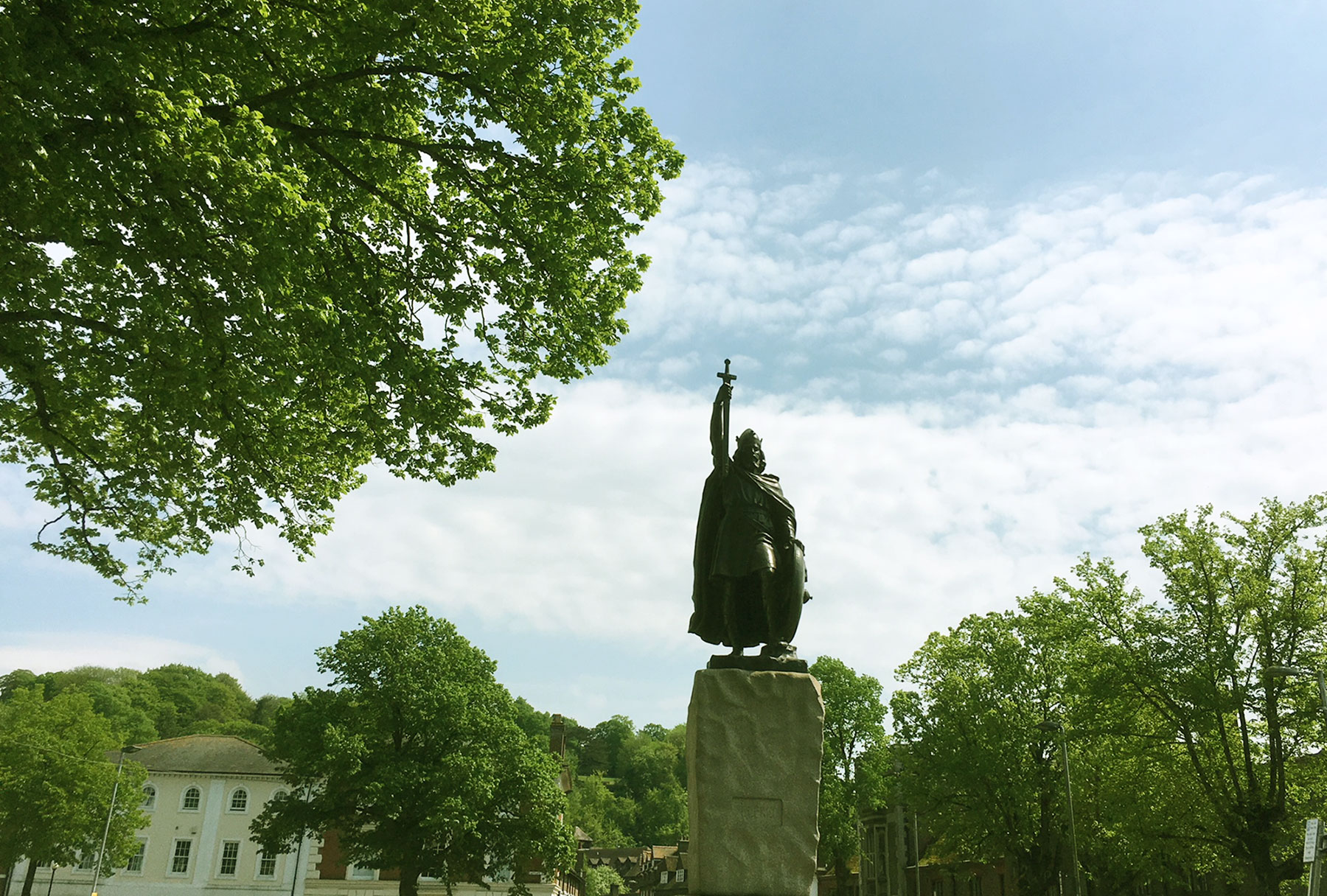The Search for Alfred the Great
In search of the final resting place of the legendary Anglo-Saxon king

About the project
King Alfred the Great: the warrior scholar
King Alfred the Great (born 849; ruled 871-99) is the best known of all the Anglo-Saxon kings. He was a gifted leader, warrior, strategist, scholar and administrator. Alfred was best known for defending Wessex against the Viking invaders, but he also laid the foundations for a unified English nation. In Winchester, Alfred’s story is hugely resonant – the city was the ancient capital of England as chosen by King Alfred as the seat of power for his kingdom of Wessex. Over the last century and beyond, there have been many attempts to find Alfred the Great and identify his final resting place, but all have proved inconclusive.
The story of Alfred’s remains
King Alfred was first interred in the Anglo-Saxon cathedral in Winchester, known as the Old Minster and then moved by his son Edward the Elder to New Minster. Edward, his brother, son and grandson were also buried at New Minster. In 1110, New Minster was moved to Hyde and became Hyde Abbey. The royal burials were also moved there. In the sixteenth century, the Dissolution of the Monasteries resulted in the dismantling of Hyde Abbey, but the bodies remained in situ.
In 1788, a workhouse/prison was built on the site of Hyde Abbey. An eyewitness reported seeing the tombs emptied and the remains thrown about. In 1866-67, an antiquarian called John Mellor, claimed to have excavated the bones of the Wessex royal household from the site of Hyde Abbey. Mellor sold the bones to the Rector William Williams of Saint Bartholomew’s Church in Hyde, who reinterred them in the unmarked grave in the late nineteenth century.
The Search for Alfred the Great
In early 2013, Hyde900, working with Saint Bartholomew’s Church, petitioned Winchester Diocese to grant permission to exhume the remains of the so-called 'unmarked grave'. Archaeologists from the University of Winchester, led by osteoarchaeologist Dr Katie Tucker, exhumed the remains in March 2013 and found bones that came from a minimum of six individuals. Radiocarbon dates revealed the skeletons from the unmarked grave dated from about 1100 to 1500 AD, much later than Alfred’s reign. So where were the remains of King Alfred and the Wessex royal family?
The pelvic bone
As part of Dr Tucker’s research she contacted the Winchester Museum Service to establish more about a community excavation that took place on the site of Hyde Abbey between 1995 and 199. This led to an unexpected development. When Dr Tucker examined remains from that excavation, she found a fragment of pelvic bone that had been found at the site of Hyde Abbey’s High Altar. Radiocarbon dating by the University of Oxford yielded a date range of AD 895 - 1017, and osteological analysis found it belonged to a man between 26 and 45+ at death. As there was no Anglo-Saxon cemetery on the site of the abbey, the most plausible explanation is that the bone belongs to King Alfred, Edward the Elder, or Æthelweard, the brother of Edward. However, as only King Alfred and Edward the Elder would have been buried at the High Altar, they are the most likely candidates.
For more in-depth information about the evidence from the 'unmarked grave' and Hyde Abbey, as well as further information about King Alfred, Edward the Elder and the burial place of Anglo-Saxon kings, explore the resources below.
Further information
University of Winchester academics have particular expertise in the history and archaeology of medieval Winchester and Wessex.
Barbara Yorke, Professor Emerita of Early Medieval History, is an expert in the Anglo-Saxon royal line and medieval royal Winchester.
Ryan Lavelle, Professor of Early Medieval History, is an expert on King Alfred and Anglo-Saxon warfare. Author of the award-winning Alfred's Wars, he has actied as a historical advisor for the BBC2 hit series The Last Kingdom, the dramatisation of Bernard Cornwell's best-selling books about the life of King Alfred and the birth of England as a nation. He was the organiser of the conference 'Winchester, a Medieval Royal City'' in July 2017, a conference on the development of Winchester, its cultural and political life and its place in the Saxon and early medieval world.
Dr Simon Roffey, Reader in Medieval Archaeology, was Co-Director of the high-profile recent excavation of a medieval hospital on a hill overlooking Winchester. As the site yielded rare evidence that here medieval lepers were cared for and treated with respect rather than ostracised, it has made headline news and become known as the 'leper hospital'. Find out more.
The Centre for Medieval and Renaissance Research is an interdisciplinary platform for medieval experts across the University, from History and Archaeology to Religious Studies and English Studies.
Medieval Jewish Winchester is a collaborative interdisciplinary project in which Winchester academics have worked with Winchester City Council to rediscover Winchester's rich medieval Jewish history and heritage and to make it accessible to the public.
